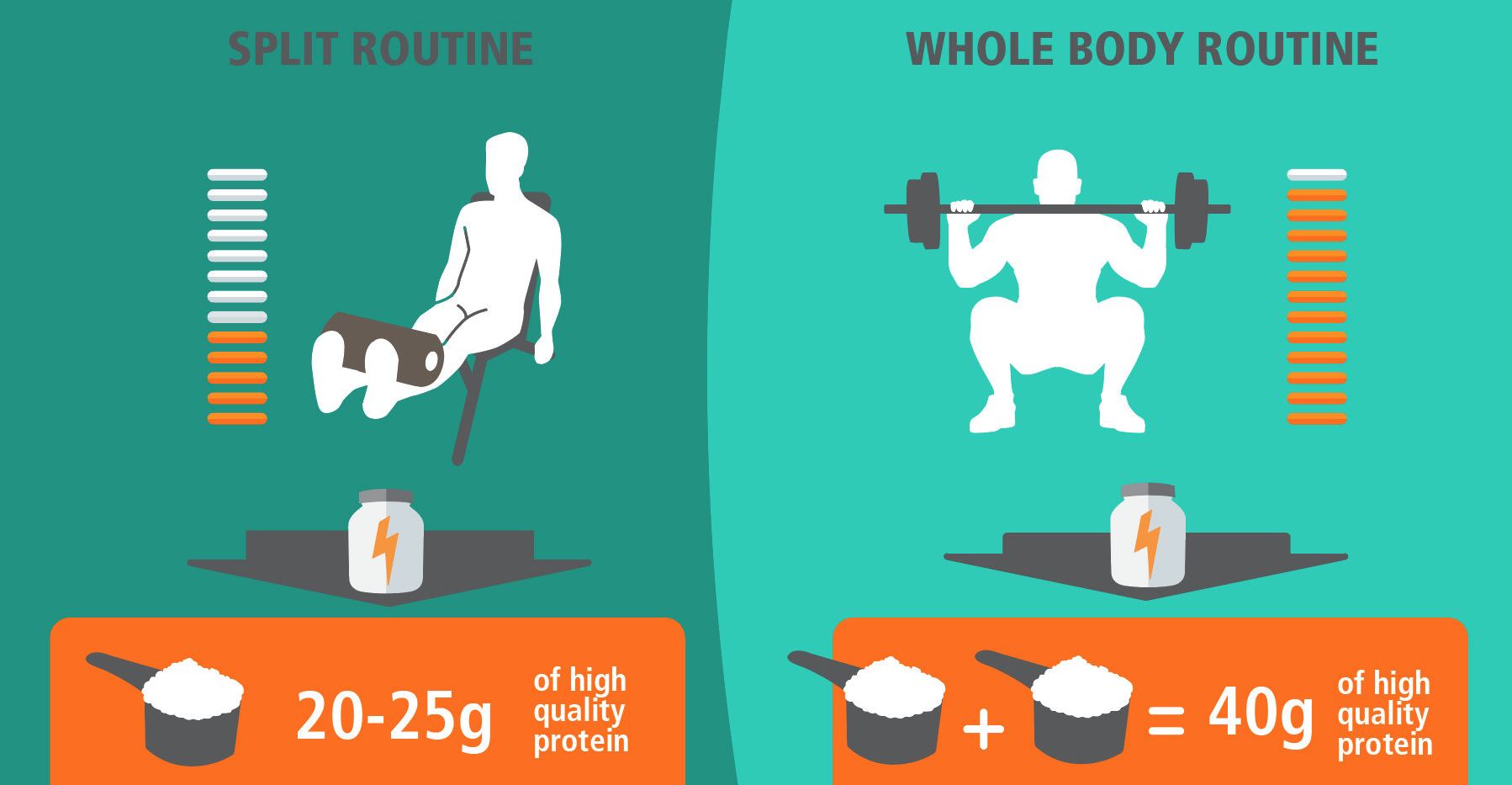New research is challenging the way we think of post-workout protein consumption in relation to bodyweight.
The University of Sterling has issued a report challenging everything we’ve known about protein and its correlation to gaining muscle mass. Here’s what they found:
FACTS AND FIGURES
It’s common sense among dieticians and personal trainers that one should aim for 1.2 to 1.6 grams of protein per kg of bodyweight after you finish your workout and you should do this every day if your goal is bulking up. If you are, for example, aiming to ingest 120 g per day, it would be easier to divide that into four or five separate meals spread evenly throughout the day. This way, you would be getting around 20-30 g of protein per meal, which in turn fuels the muscles with the amino acid leucine, which is around 2.5 g per meal.
Then there’s that thing called a protein ceiling, meaning there’s a limitation on how much protein you can use per meal in order to build and repair the muscle. The bigger your bodyweight, the bigger the protein consumption. For example, a 170-pound male should ingest around 30g of protein, someone bigger, say 240 pounds should ingest around 40g.
In this new research, the researchers recruited 30 young, trained males and split them into two groups. The males in the first group had overall lower lean body mass of less than 143 pounds (65 kilograms) and the males in the second group had it above 154 pounds (70 kilograms).
All of them took part in two trials consisting of consuming protein after a full-body workout. In the first trial, they consumed 20g of whey protein, in the second 40g. Afterwards, the researchers measured how much the muscle will grow using muscle biopsies and metabolic tracers.
The Workout
The list of exercises was the following (done consecutively): chest press, lat pull-down, leg curl, leg press, and leg extension. Leg exercises were performed unilaterally; 75% of their 1 RM was used at a tempo of 1 second concentric, 2 second eccentric contraction. The workout consisted of three sets of ten reps with a final fourth set to failure ensuring each participant was working at the same relative intensity. The same workout was used for the second trial.
Here’s what the new report is challenging:
CHALLENGE #1 BIGGER ATHLETES NEED MORE PROTEIN
It’s the first study to make an exact correlation between your total lean body mass and muscle protein synthesis after resistance training along with protein intake. The main point is that those with more muscle mass don’t need more protein after resistance training. They did not find any difference in muscle gain response to protein after a full body regimen between the two groups’s participants when they were looking at the measured variables, namely muscle biopsies and blood plasma analyses, including leucine levels.
It’s been a long and widely-held assumption so far that bigger athletes need larger quantities of protein, directly correlating their bodyweight to their daily protein recommendations. In this study, the participants were given a full-body regimen, whilst earlier studies included leg-only exercises. And these studies are the only ones on which protein recommendations are based. This would indicate that it is the amount of muscle mass that’s worked that has a bigger influence on how much protein is needed afterwards, than the overall amount of muscle mass.
CHALLENGE #2 No MORE THAN ~25G OF PROTEIN AFTER WORKOUT
This doesn’t mean that it doesn’t matter how much protein you are consuming. The study found that the participants’ muscles grew and recovered a lot faster and efficient after ingesting a higher dose. (40g over 20g). The size of the participant was irrelevant.
Study author Kevin Tipton said that, so far, it was consensus among sports nutritionists, including the American College of Sports Medicine and the British Nutrition Foundation, that athletes don’t need more than 25 g of protein to maximize the muscle’s ability to grow after exercise.
TAKEAWAYS
He further explains that in order to recommend the exact amount of protein we also need to take into consideration the various specific demands of the workout, regardless of the athletes’ size. This puts the type of workout as the primary guideline as to how much protein one needs to ingest after finishing the workout, removing the bodyweight as indicative parameter.
Since conclusions were drawn from results made by young, trained men, they may differ with groups of older age, s*x and training experience. In any case, if you already are an experienced lifter,

